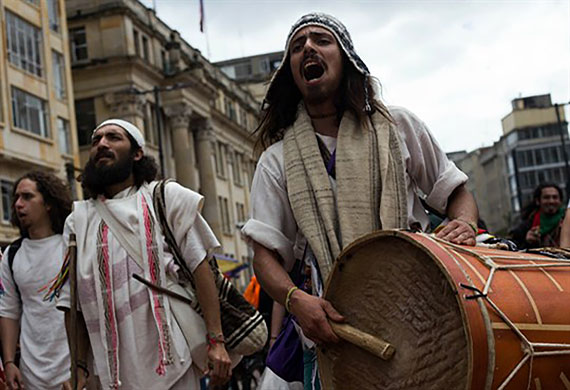The Nation
November 2016 should have marked a watershed moment in Colombia’s bloody history, as it is the date when the Colombian government signed a final peace accord with the FARC guerrilla group after more than half a century of war. And yet, since that date Colombia has become one of the most dangerous places in the world to be a human-rights worker. Between November 2016 and April 2019, 566 community leaders and human-rights defenders were murdered.
Unsurprisingly, the Colombian government insists that violence has abated by pointing to reductions in the homicide and kidnapping rates and by minimizing the magnitude and systematic nature of the assassinations. But many Afro-Colombian activists differ. For them, the targeted killings of men and women working to protect their communities from the entry and expansion of illicit activities, extractive industries, and new armed groups in their territories is unquestionably systematic. This is why Erlendey Cuero—vice president of the National Association of Displaced Afro-Colombians (AFRODES) and herself a target of multiple death threats—distributed a special leaflet to the attendees of Colombia’s 2018 UN Universal Periodic Review, a mechanism that was established to review human-rights performance of member states (UN-UPR). The leaflet, bearing the logo of several Afro-Colombian organizations, displayed the photos of 12 Afro-Colombian leaders assassinated since 2016 and read, “Peace has not yet arrived in our territories.”

